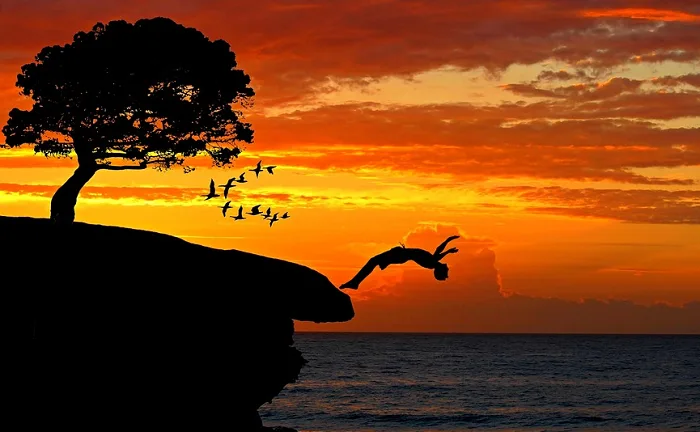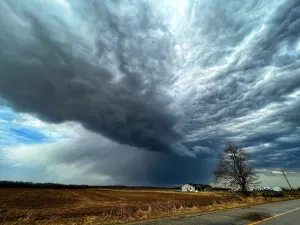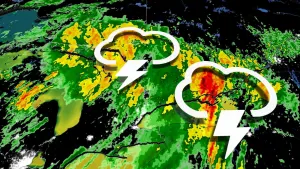
Going cliff jumping? Read this first

An expert says cliff diving is “not an activity that most people should engage in." File photo: Pixabay
Public reaction was split over whether leaping into the natural pool below was family-friendly or irresponsible. Thrill-seekers who enjoy the rush of cliff jumping at their cottage should be asking: Just how risky of an activity is this?
Dr. Tyler Christie, Emergency Physician with the Department of Emergency Medicine at Health Sciences North in Sudbury, Ontario, says that the risk depends on the height of the jump. The higher the jump, the greater the jumper’s downwards velocity. If someone jumps from a three metre cliff, they’ll reach speeds of about twenty-seven to thirty kilometres per hour as they fall towards the water. At six metres, they’ll be hitting forty kilometres per hour. Anyone who has done a belly-flop off an ordinary diving board knows how solid water can feel. An uncontrolled or unbalanced entry from a tall height can cause fractures to the feet and spine, compressed vertebrae, and bruising, says Dr. Christie. When the jumper hits the water, the rapid deceleration can cause a concussion from the amount of force being transmitted through their body.
Dr. Christie described a case where he treated a twenty-year old American student on a football scholarship who went cliff jumping and landed on his chest. “He ended up having what we call a traumatic aortic dissection. Essentially it’s a deceleration injury, and it’s seen a lot in car accidents.” The patient was stabilized in a trauma centre where his aorta was surgically repaired. “He’s not able to play football now, he’d be on medication to ensure his blood pressure is maintained in a certain area,” says Dr. Christie. “So that one decision can have drastic effects on the rest of your life.”
Dr. Christie says that due to the health risks, cliff diving is “not an activity that most people should engage in.” For those who seek out the experience, he advises taking precautionary measures like using the buddy system, jumping from a low height, and making sure that the water has been fully explored and isn’t hiding any nasty surprises like rocks or logs. Jumpers should also be aware of signs that something is off after a jump: discomfort in the lower legs or radiating pain, difficulty hearing, dizziness, and vomiting are all signs to seek medical attention. “Anything that you would not consider a normal feeling, that you didn’t have before doing the activity, I think it’s worthwhile to get checked out from there,” says Dr. Christie.
Professional cliff divers provide a good example of the high amount of training and precautionary measures needed to jump from a high cliff into open water and avoid injury. In the Red Bull Cliff Diving World Series, women compete by diving from a maximum height of twenty-one metres, and men from twenty-seven metres. All competitions have paramedics and an ambulance on standby, and three safety divers in the water at the landing point, says Red Bull Cliff Diving competition director Hassan Mouti. In addition, says Mouti, because the divers compete in a natural body of water, environmental factors like the condition of the take-off spot and landing spot, water depth, tides, waves, and more must all be checked before diving.
While the casual cottage cliff jumper may not be leaping from such great heights, Canadian cliff diving athlete Lysanne Richard has some advice on how to avoid injury when jumping. She advises first practicing with a springboard at a pool, and to working on jumping forward in order to be able to clear any rocks. Start small by jumping from a three metre springboard, and only move up to a higher level when you feel comfortable. For jumping in natural areas, she recommends checking the site to make sure that the water is at least five metres deep and isn’t hiding any rocks under its surface (and keep in mind that water levels can change). She adds, “Have fun, but be safe first. Be sure everything is safe first and never, never do this alone.”
This article was written for Cottage Life by Grace Hunter.









